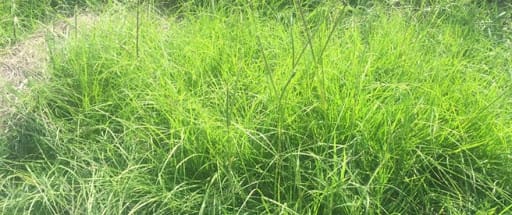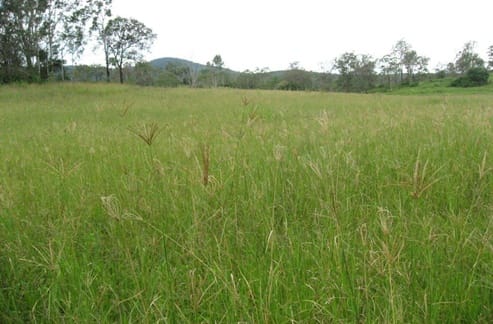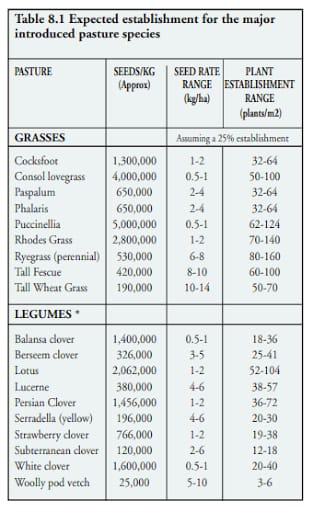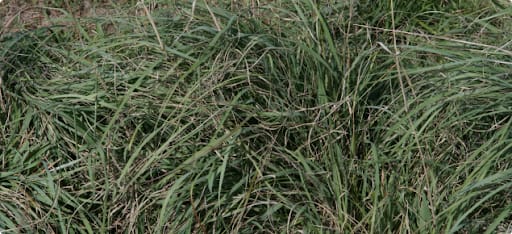When you have a pasture that is a perfect fit to the soil, climate, livestock and season -
you have a pasture with a high potential for large production of biomass.
During the warm seasons of spring and summer, certain grasses are a better fit for your pasture and cattle than the cool season ones.
But, what are warm-season grasses?
Warm-season grasses bring a whole lot of additional benefits, when compared with cool-season grasses – and have both advantages and disadvantages.
They can limit nutrient escape into the underground water sources, can help with weed control, raise the number of microorganisms present in your soil and help with soil structure, not to mention they will help with your pasture composition and fertility.
Are you wondering when to plant warm-season grasses? Well, if you have planned ahead and reseeded your pasture this late spring you’ve most certainly done the right thing.
However, are you aware of everything there is to know about the warm season grass of your choice and its advantages and disadvantages?
And do you know if it’s the right fit for your soil, region, cattle and dairy farm? I’m here to share with you the most valuable information on warm-season grasses as pasture for your cattle, in Australia. This way you can know if the warm-season grass you chose was the right one, or for next year which one to pick.
Let’s go through a deep run through 3 of the best warm-season grasses that are also quite widely used. And no, we are not going to go through the very common and well-known Bermuda grass and crabgrass. Instead – we’re going to discuss the Paspalum, Rhodes Grass and Consol lovegrass warm-season grass types!
1. Paspalum
2. Rhodes Grass
3. Consol Lovegrass
PASPALUM
(Paspalum dilatatum)

Paspalum is one of the most widely used and beneficial warm-season grasses for your dairy farm pasture.
A perennial spring/summer grass with a moderate tolerance for frost which also adapts quite well to a wide range of environments. Making it a great fit for many regions, climates and soils. Paspalum is the right choice when it comes especially to fertile soils.
Paspalum is also a highly resistant plant to many adverse soil attributes such as salinity, waterlogging, acidity and different levels of fertility. Paspalum is also highly tolerant of heavy grazing from your cattle. It’s also highly tolerant to frost even though it is predominantly a summer grass and dormant during winter.
Take note that during the months of spring intense grazing is recommended due to the high benefits to your soil and pasture, however – during summertime intense and heavy grazing is not at all recommended.
Intensely grazing your pasture during summer can make the practices’ negative effects 200% worse. The lack of moisture combined with summer’s high temperatures can literally kill your pasture – and even though this is good for your weeds, it’s not at all good for your healthy dense grass.
This plant native to South America is now predominantly widespread throughout the world – as well as widely accessible to intentionally seed or reseed. It’s a plant that thrives best when the temperature is between 23 to 30 degrees Celsius and with annual rainfall between 900 and 1300 mm.
It’s a plant with a relative alright tolerance to acids in the soil – tolerating a pH level as low as 4.5, and even more, it has an incredible tolerance in times of drought. It’s a plant with really thick rhizomes which gives it a strong endurance to periods of intense drought. Paspalum can grow in regions or periods of time when rainfall doesn’t go above 750 mm.
Rhodes Grass
(Chloris gayana)

Rhodes Grass is another relevant warm-season grass that’s widely used by dairy farmers all over the world, including in Australia. However, Rhodes Grass is a low to moderate summer-growing grass – yet despite this, it’s highly adaptable to many types of soils.
What’s great about Rhodes Grass is that it’s quite tolerant to salt. Why is this important? Well, salinity in the soil is a considerable issue in all of Australia, leading to less agricultural productivity and the damage of the environment.
But, with a grass that is tolerant to salt, you’ll have a much stronger pasture and larger amounts of kg DM/ha than you would have with a non-tolerant grass (if of course, you have a higher salinity level in your land’s soil).
Rhodes Grass also is a great warm season grass if you are looking to gain some erosion control. It has a strong stolon growth on top of strong roots.
Rhodes Grass is somewhat easy to establish and it works well with many types of soils ranging from light-textured ones to more heavy textured ones. According to The Grazier’s Guide to Pastures – with Rhodes Grass, there are around 2,800,000 seeds per kg. The plant also has around 1-2 seed rate range (kg/ha) and a plant establishment range (plants/m2) of 70-140.
Rhodes Grass also is a great warm season grass if you are looking to gain some erosion control. It has a strong stolon growth on top of strong roots.
If you have sowed or are sowing this marvellous warm-season grass on an inland soil the best legumes to match it with are Lucerne, barrel medics, Serradella, subterranean clover and woolly pod vetch. However, if you are by the coast – the best legumes that go with it are white clover, Kenya clover, atro and lotus.
Check out this wonderful table showing the establishment range for many warm seasons and cool-season grasses.

Consol Lovegrass
(Eragrostis curvula, type Conferta)

The Consol lovegrass is another perennial grass from our warm-season grasses list, that best fits the warm seasons and which can be a beneficial choice when it comes to your pasture.
It’s quite a fantastic pasture plant with an established range of 50-100 plants per m2. But, Consol lovegrass is more than a pasture plant it’s also a soil binder. It will help your soil to stabilize and it will also help with fugitive dust, or erosion caused by wind and water.
This grass is most suited for your soil if it’s a lighter one – it doesn’t prosper as well in heavy soils. It does, however, fit a wide range of light soils from sands to loams.
One of the most beneficial attributes of this plant is its tolerance to acidulous soils. It does quite a tremendous job growing in soils with a pH level of even 4.1. It also does a tremendous job where the aluminium mineral is present in a higher concentration of up to 30%.
Consol lovegrass has an outstanding capacity to produce a high amount of biomass across three seasons. If you live in a region where there are medium amounts of rainfall, you can end up with a grass yield of more than 6000 kg of DM/ha/year.
This grass is also an incredibly resistant warm weather grass, with a high capacity to overcome soil and climatic limitations – more than Lucerne in many ways. For example, the study “Consol lovegrass (Eragrostis curvula complex) controls spiny burrgrass (Cenchrus spp.) in south-western New South Wales” shows how Consol was much more easily established than Lucerne and was resilient even against consecutive and extremely dry summer periods. It’s one of the best grasses for hot weather.
On top of this, an interesting fact that the study has proven is that the grass was denser when fertiliser was not applied to the pasture.
The Consol lovegrass is recommended even to infertile and sandy textured soils in regions where there are low amounts of rainfall. It’s considered a better option to Lucerne – especially when Lucerne isn’t an economically-friendly option or when its establishment or management prove to be harder to do than desired.
Along Paspalum, Rhodes Grass and Consol Lovegrass there are a few other warm-season grasses that can bring a whole lot of benefits to your pasture and dairy farm. Grasses such as Bermuda grass, Digit grass, Zoysia grass and St. Augustine grass, Buffalo grass and centipede grass.
Zoysia grass is best known and used for its ability to tolerate heat and drought. Bermuda grass also can adapt quite well to a lot of soil types – but it thrives in elevated temperatures. St. Augustine grass is a very self-sufficient grass that needs little to no care in regions where there are more than 20 inches of rainfall annually.
If you have chosen any of these warm-season grass types for your spring/summer pasture – you’re not going to go wrong with them. All are more than adaptable to dry and hot conditions, small amounts of annual rainfall, and even periods of drought.
When choosing a warm-season grass to sow – always the latest in late spring – make sure to keep a note of a few attributes relating to your soil, pasture and dairy farm. Attributes such as soil acidity, soil salinity, establishment range, drought tolerance, and even salt tolerance.
Warm-season grasses also have characteristics that can benefit you if you have special needs on your dairy farm, such as soil with a binding problem, a tendency to become acidic or even infertility problems.
Bringing so many benefits to your pasture during spring and summer – they are a great option for seeding or reseeding your pasture. Depending on the needs of your soil, cattle and dairy farm – you can safely make your pick from the ones I’ve mentioned above.
If you have any questions, write them down in the comment box below! And give this article a share to make sure fellow farmers are taking advantage of the best warm-season grass varieties!
Happy farming!
- The Dedicated Team of Pasture.io, 2019-12-04